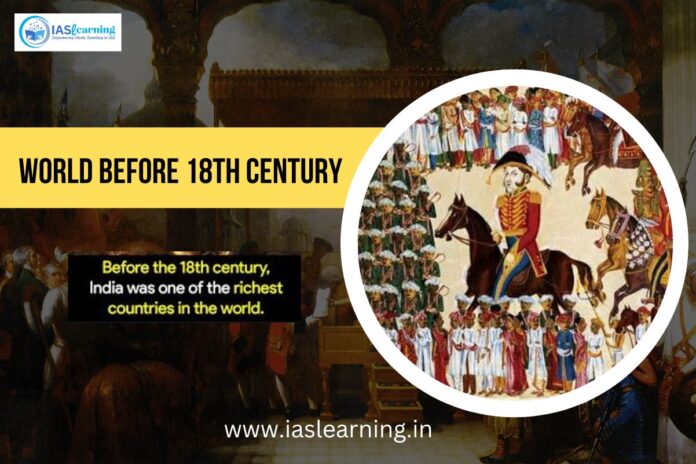Explore the rich tapestry of the world before 18th century, a period defined by diverse civilisations, remarkable cultural achievements, and pivotal historical events.
1. Mesopotamia (3500 BCE – 500 BCE):
- Geography and Environment:
- Located between the Tigris and Euphrates rivers, Mesopotamia was a fertile region in the Middle East (modern-day Iraq, Kuwait, parts of Iran, Syria, and Turkey).
- Unpredictable flooding of rivers led to the development of advanced irrigation systems.
- Sumerian Civilization:
- City-States: Independent city-states like Ur, Uruk, and Lagash with their own rulers.
- Cuneiform Writing: One of the earliest writing systems on clay tablets.
- Ziggurats: Pyramid-like structures serving religious and administrative purposes.
- Epic of Gilgamesh: One of the earliest known works of literature.
- Akkadian and Babylonian Empires:
- Sargon of Akkad (2334 – 2279 BCE): Established the first empire in history.
- Hammurabi (1792 – 1750 BCE): Sixth king of the First Babylonian Dynasty; known for the Code of Hammurabi, one of the earliest legal codes.
2. Ancient Egypt (3100 BCE – 30 BCE):
- Nile River Civilization:
- The Nile River provided fertile soil, facilitating agriculture and settlement.
- Upper and Lower Egypt unified around 3100 BCE under King Narmer (Menes).
- Pharaohs and Pyramids:
- Pharaohs: Considered divine rulers, responsible for maintaining cosmic order (ma’at).
- Pyramids: Monumental tombs for pharaohs; the Great Pyramid of Giza is a notable example.
- Hieroglyphics and Papyrus:
- Writing System: Hieroglyphs on temples and tombs, demotic script for daily use.
- Papyrus: Paper-like material made from reeds, used for writing.
- Religion and Afterlife:
- Belief in a complex pantheon of gods and goddesses.
- Emphasis on the afterlife; elaborate burial practices and mummification.
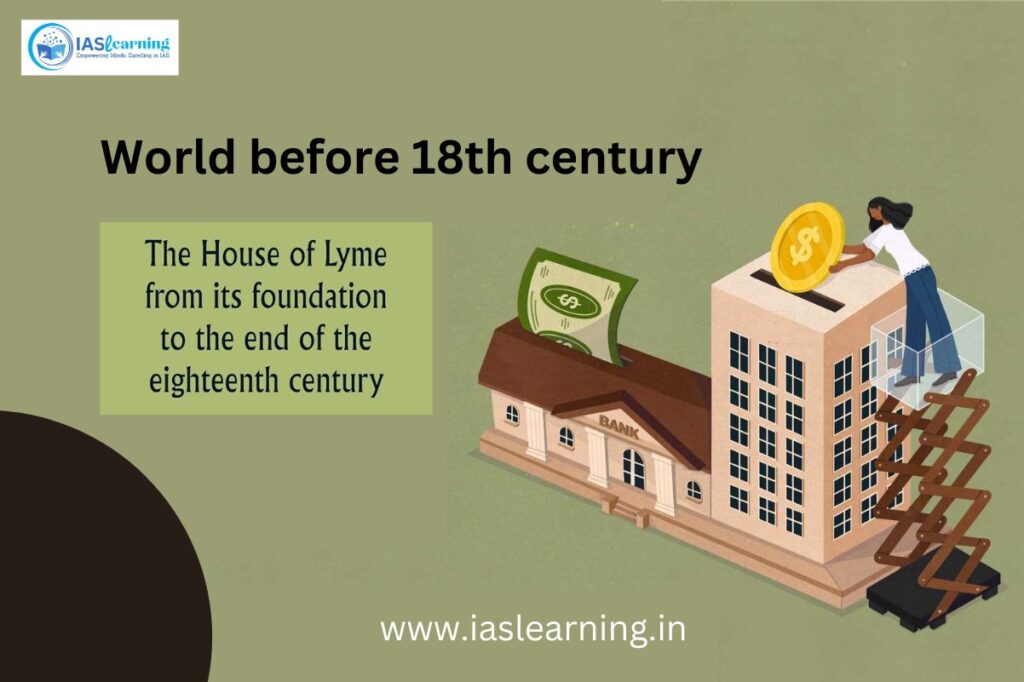
3. Indus Valley Civilisation (3300 BCE – 1300 BCE):
- Geography and Urban Planning:
- Flourished in the basin of the Indus River (modern-day Pakistan and northwest India).
- Well-planned cities like MohenjoDaro and Harappa with advanced drainage systems.
- Trade and Economy:
- Extensive trade networks with Mesopotamia and other regions.
- Economy based on agriculture, with evidence of advanced techniques.
- Indus Script:
- Mysterious script found on seals and artifacts; yet to be deciphered.
- Decline and Disappearance:
- Theories include environmental changes, Aryan invasions, or shifts in trade routes.
- Lack of deciphered written records adds to the mystery of their decline.
Classical Antiquity period
Ancient Greece (c. 800–146 BCE):
- Birthplace of Democracy in Athens:
- Athens, in the 5th century BCE, developed a form of government known as democracy.
- Citizens participated in decision-making through an assembly, and major decisions were made through open debates.
- Contributions in Philosophy, Arts, and Sciences:
- Philosophy:
- Socrates (469–399 BCE): Known for the Socratic method of questioning and his contributions to ethics.
- Plato (427–347 BCE): Founded the Academy in Athens; explored philosophy in dialogues like “The Republic.”
- Aristotle (384–322 BCE): Tutored Alexander the Great; made significant contributions to ethics, metaphysics, and biology.
- Arts:
- Drama: Tragedies and comedies by playwrights like Aeschylus, Sophocles, Euripides, and Aristophanes.
- Sculpture: Masterpieces like the Parthenon sculptures and the statue of Zeus at Olympia.
- Sciences:
- Mathematics: Pythagorean theorem and Euclidean geometry.
- Medicine: Hippocratic Oath and early medical practices.
- Ancient Rome (c. 753 BCE–476 CE):
- Republic and Roman Empire:
- Roman Republic (509–27 BCE): A system of checks and balances with a Senate and elected officials.
- Roman Empire (27 BCE–476 CE): Emerged after the end of the Roman Republic; Augustus (Octavian) became the first Roman Emperor.
- Roman Law, Engineering, and Governance:
- Roman Law: The Twelve Tables codified Roman law; the Justinian Code later compiled and revised Roman legal principles.
- Engineering: Aqueducts, roads, and monumental structures like the Colosseum and the Pantheon.
- Governance: Efficient administration, division of power, and the concept of “senatus populusque Romanus” (the Senate and the People of Rome).
- Pax Romana:
- A period of relative peace and stability across the Roman Empire, lasting from 27 BCE to 180 CE.
- Facilitated trade, cultural exchange, and the flourishing of the arts and sciences.
- Legacy and Influence:
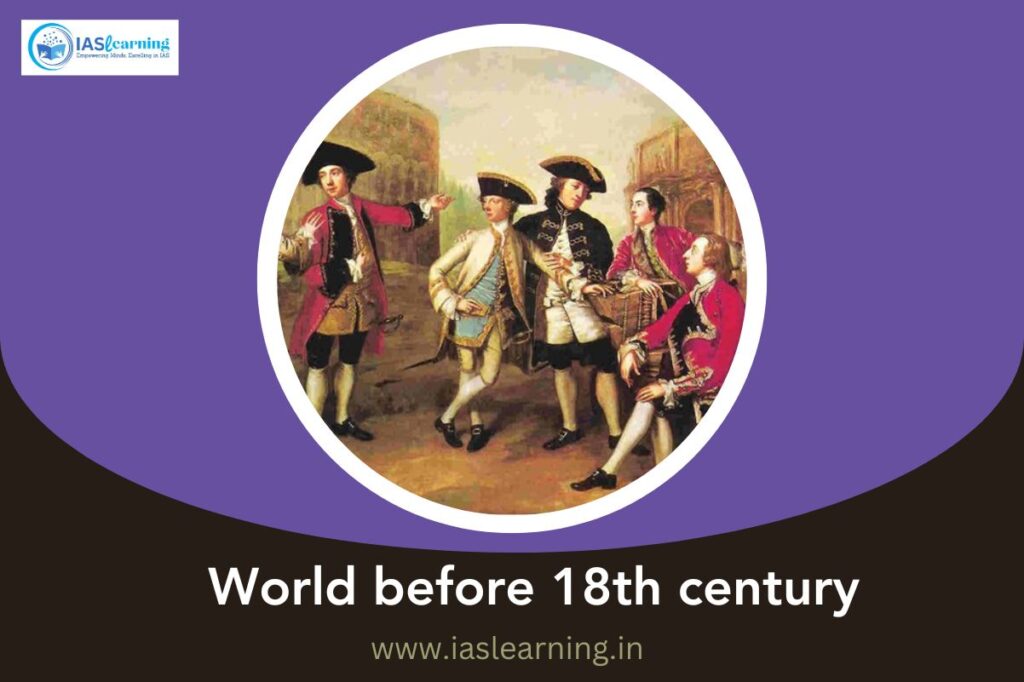
- Language and Literature:
- Latin, the language of Rome, continued to be influential, forming the basis of many modern Romance languages.
- Literature, such as Virgil’s “Aeneid” and Cicero’s speeches, had a lasting impact.
- Christianity:
- The spread of Christianity, which began during the Roman Empire, eventually became the dominant religion in Europe.
- Political Concepts:
- Ideas of citizenship, representation, and the rule of law in both Greek democracy and Roman governance influenced later political thought.
- Architectural and Engineering Achievements:
- Roman architecture, with its use of arches and domes, influenced subsequent architectural styles.
- Philosophical and Ethical Foundations:
- Greek philosophy, especially the works of Plato and Aristotle, continued to shape ethical and philosophical thought.
Middle Ages
Byzantine Empire (c. 330–1453)
- Eastern Roman Empire:
- The Byzantine Empire emerged as the eastern continuation of the Roman Empire after the division in 285 CE.
- Constantinople (modern-day Istanbul) served as its capital, strategically located for trade and defense.
- Preserver of Greek and Roman Traditions:
- The Byzantines preserved and continued many aspects of Greek and Roman culture, including literature, art, and philosophy.
- The Greek language remained the official language of the Byzantine Empire.
- Justinian I (527–565 CE):
- Emperor Justinian I attempted to reunify the Roman Empire with his reconquests in the west (including Italy) and the codification of Roman law in the Corpus Juris Civilis.
- Hagia Sophia:
- The construction of the Hagia Sophia in Constantinople (537 CE) symbolized the grandeur of Byzantine architecture and the fusion of religious and imperial authority.
Islamic Golden Age (8th–14th centuries)
- Flourishing of Science, Mathematics, and Philosophy:
- Scholars in the Islamic world made significant advancements in various fields during this period.
- Mathematics: The introduction of Arabic numerals and the preservation and translation of Greek mathematical texts.
- Science: Advances in astronomy, medicine, chemistry, and physics.
- Philosophy: Translations of Greek philosophical works and the development of Islamic philosophy.
- House of Wisdom in Baghdad:
- The House of Wisdom, established in the 8th century in Baghdad, was a major center for the translation of Greek, Roman, and Indian texts into Arabic.
- Scholars engaged in research, education, and the preservation of knowledge.
- Medieval Islamic Caliphates:
- The Abbasid Caliphate (750–1258) played a significant role in fostering the intellectual achievements of the Islamic Golden Age.
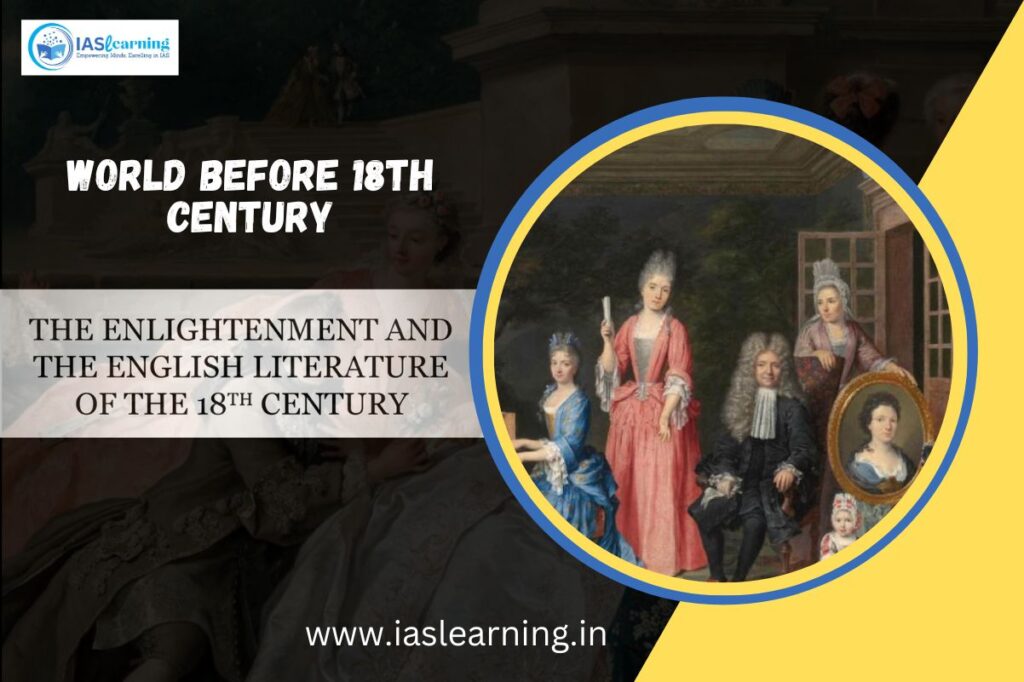
Feudalism in Europe (9th–15th centuries)
- Decentralized System:
- Feudalism was a social, economic, and political system characterized by decentralized power structures.
- The king granted land (fiefs) to nobles (lords) in exchange for military service and loyalty.
- Kings, Lords, and Serfs:
- Kings: Ruled over broad territories but relied on the support of local lords for governance and defense.
- Lords: Controlled manors and exercised authority over the peasants (serfs) who worked the land.
- Serfs: Tied to the land, providing agricultural labor in exchange for protection.
- The Role of the Catholic Church:
- The Catholic Church played a central role in medieval European society.
- Spiritual Authority: The Church provided spiritual guidance and was a unifying force in an otherwise fragmented political landscape.
- Education and Culture: Monasteries were centers of learning and preservation of knowledge.
- Feudal Hierarchy: The Church had considerable influence over monarchs and nobles.
Renaissance and the Early Modern Period, with a focus on the Renaissance itself, the Age of Exploration, and the Reformation:
Renaissance (14th–17th centuries)
- Rebirth of Interest in Classical Art, Literature, and Humanism:
- The Renaissance, meaning “rebirth,” was a period of renewed interest in the classical cultures of Greece and Rome.
- Humanism emphasized the value of human achievements, focusing on individual potential and creativity.
- Advances in Science, Exploration, and the Printing Press:
- Science: Pioneering work by figures like Nicolaus Copernicus (heliocentric model), Galileo Galilei (telescope, laws of motion), and Johannes Kepler (laws of planetary motion).
- Exploration: Increased understanding of navigation, leading to voyages by explorers like Christopher Columbus, Ferdinand Magellan, and Vasco da Gama.
- Printing Press: Invented by Johannes Gutenberg, it facilitated the spread of knowledge, literature, and ideas, democratizing access to information.
Age of Exploration (15th–17th centuries):
- European Exploration and Colonization:
- Americas: Christopher Columbus reached the Americas in 1492, initiating European exploration and colonization.
- Africa: Vasco da Gama’s voyage around the Cape of Good Hope opened sea routes to Asia.
- Asia: Exploration by figures like Marco Polo and the establishment of trade routes.
- Encounter of Different Cultures, the Columbian Exchange:
- Columbian Exchange: Exchange of goods, ideas, and diseases between the Old World and the New World.
- Impact on Europe: Introduction of new foods (potatoes, tomatoes), precious metals, and cultural influences.
- Impact on the Americas: Introduction of European crops, livestock, and diseases.
Reformation (16th century):
- Martin Luther’s 95 Theses and the Protestant Reformation:
- Martin Luther, a German monk, protested against perceived abuses in the Catholic Church.
- Nailed his 95 Theses to the door of the Wittenberg Castle Church in 1517, challenging practices like the sale of indulgences.
- Religious Conflicts and Counter-Reformation:
- Religious Conflicts: The Reformation led to religious conflicts, including the Wars of Religion in Europe.
- Counter-Reformation: The Catholic Church responded with the Counter-Reformation, aiming to address internal corruption and reassert Catholic doctrines.
- Council of Trent (1545–1563): Important Catholic Church council that clarified and reaffirmed doctrine while addressing some of the criticisms raised by the Protestant reformers.
Legacy and Impact:
- Cultural and Artistic Flourishing:
- The Renaissance left a profound impact on art, literature, and culture, with figures like Leonardo da Vinci, Michelangelo, and William Shakespeare.
- Scientific Revolution:
- The advances in science during the Renaissance laid the groundwork for the Scientific Revolution, challenging traditional views and fostering empirical inquiry.
- Global Interconnectedness:
- The Age of Exploration contributed to the emergence of a more interconnected global system, with the exchange of goods, cultures, and ideas.
- Religious Diversity:
- The Reformation led to the fragmentation of Christianity, giving rise to various Protestant denominations and shaping the religious landscape of Europe.
Historical periods and events in Asia, Africa, and the Americas that you’ve mentioned:
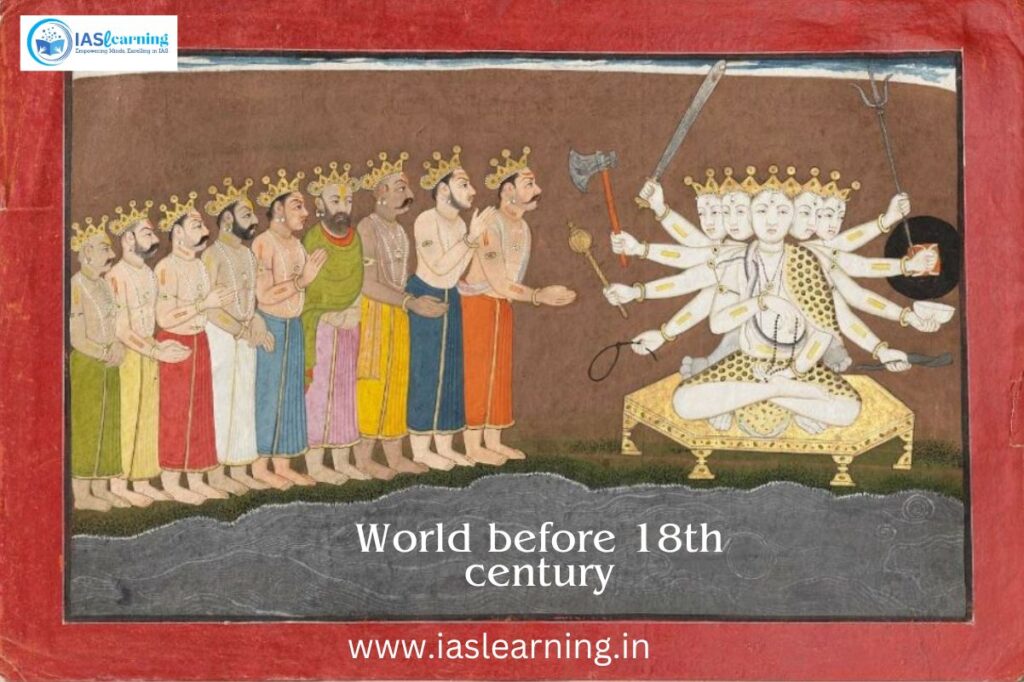
Asia:
Ming (1368–1644) and Qing (1644–1912) Dynasties in China:
- Ming Dynasty (1368–1644):
- The Great Wall: Extended and rebuilt during the Ming Dynasty to protect against northern invasions.
- Forbidden City: Construction of the imperial palace in Beijing, serving as the political and ceremonial center.
- Voyages of Zheng He:
- Admiral Zheng He led seven maritime expeditions in the early 15th century, showcasing Chinese naval power and diplomatic reach.
- The voyages reached Southeast Asia, India, the Middle East, and East Africa.
- Qing Dynasty (1644–1912):
- Qing Expansion: The Qing Dynasty expanded China’s borders, incorporating Taiwan, Mongolia, and Tibet.
- Cultural Achievements: Flourishing of arts, literature, and the establishment of the Manchu script.
Tokugawa Shogunate in Japan (1603–1868):
- Unification of Japan under Tokugawa Ieyasu:
- Tokugawa Ieyasu, after the Battle of Sekigahara in 1600, established the Tokugawa Shogunate, bringing an end to the Warring States period.
- Centralization of power in Edo (modern-day Tokyo).
- Sakoku Policy:
- The Tokugawa Shogunate implemented a policy of sakoku (“closed country”) to limit foreign influence and control trade.
- This period saw Japan largely closed off from the outside world.
Africa:
African Kingdoms and Empires:
- Mali, Songhai, Ghana:
- Flourishing West African empires known for their wealth, trade, and cultural achievements.
- Ghana, the earliest of the three, was known for its gold trade.
- Mali, particularly under Mansa Musa, was a center of learning and trade.
- Songhai became the largest of the three and had a significant impact on the region.
- Swahili City-States:
- Along the East African coast, city-states like Kilwa and Zanzibar were important trade centers.
- Influenced by a mix of African, Arab, and Persian cultures.
- Trans-Saharan Trade Routes:
- Trade routes across the Sahara Desert facilitated the exchange of goods, including gold, salt, and other commodities.
Americas
Aztec, Maya, and Inca Civilizations:
- Aztec Civilization:
- Flourished in central Mexico with the capital city of Tenochtitlan.
- Complex social and religious structures, advanced agriculture, and monumental architecture.
- Maya Civilization:
- Located in present-day Mexico, Guatemala, Belize, and Honduras.
- Known for impressive city-states, hieroglyphic writing, advanced mathematics, and astronomy.
- Inca Empire:
- Centered in the Andes Mountains of South America.
- Advanced engineering (Machu Picchu), extensive road systems, and a centralized administrative structure.
- Conquest by Spanish Explorers:
- Spanish explorers, led by figures like Hernán Cortés and Francisco Pizarro, conquered Aztec and Inca territories in the early 16th century.
- This led to the colonization of the Americas by European powers.
History of India Before 18th century
Ancient India
- Indus Valley Civilization (c. 3300–1300 BCE):
- One of the world’s earliest urban cultures, with well-planned cities like Mohenjo-Daro and Harappa.
- Advanced drainage systems, standardized weights, and measures.
- Vedic Period (c. 1500–500 BCE):
- Arrival of the Indo-Aryans and the composition of the Vedas, ancient sacred texts.
- Formation of early social and caste structures.
- Maurya Empire (322–185 BCE):
- Founded by Chandragupta Maurya, the first emperor to unify much of the Indian subcontinent.
- Ashoka, a notable Mauryan ruler, embraced Buddhism and promoted non-violence.
Classical and Medieval India
- Gupta Empire (320–550 CE):
- The Gupta period is often considered a golden age, marked by advancements in art, science, and literature.
- Concept of zero in mathematics and the flourishing of Sanskrit literature.
- Chola Dynasty (9th–13th centuries):
- In the southern part of India, the Cholas were known for maritime trade and a powerful navy.
- Temples and art flourished during this period.
- Delhi Sultanate (1206–1526):
- The establishment of Islamic rule in northern India with the Turkish invasions.
- Notable rulers include Alauddin Khilji and Muhammad bin Tughlaq.
- Vijayanagara Empire (1336–1646):
- Founded in the Deccan region, Vijayanagara was a powerful Hindu empire.
- The city of Hampi was its capital and a center of art and architecture.
Mughal Empire (1526–1857)
- Babur and the Mughal Dynasty:
- Babur, a Central Asian ruler, established the Mughal Empire in 1526 after the Battle of Panipat.
- His grandson, Akbar, expanded the empire and promoted religious tolerance.
- Cultural Flourishing under Akbar:
- Akbar’s reign (1556–1605) was marked by cultural achievements, including the Mughal school of painting and the creation of the Din-i Ilahi.
- Shah Jahan and the Taj Mahal:
- Shah Jahan, known for his architectural patronage, built the Taj Mahal as a mausoleum for his wife Mumtaz Mahal.
- Aurangzeb and Decline:
- Aurangzeb’s reign (1658–1707) marked a more conservative phase and saw the empire’s territorial zenith but also internal strife.
Southern and Western India
- Maratha Empire (1674–1818):
- Founded by Shivaji, the Marathas emerged as a powerful force in western India.
- The empire extended under leaders like Chhatrapati Shahu and the Peshwas.
Conclusion
- Diversity of Civilizations: The world before the 18th century was characterized by a rich tapestry of diverse civilizations, each with its unique cultural, political, and technological achievements.
- Contributions to Human History: From the ancient civilizations of Mesopotamia, Egypt, and China to the classical brilliance of Greece and Rome, and the medieval advancements in Byzantium, the Islamic world, and Europe, various societies left indelible marks on the course of human history.
- Cultural, Scientific, and Philosophical Legacies: The period witnessed the birth of democracy in Athens, the philosophical inquiries of Socrates, Plato, and Aristotle, the architectural marvels of the Roman Empire, the scientific achievements of the Islamic Golden Age, and the artistic and intellectual revival of the Renaissance.
- Global Interactions: The Age of Exploration opened up new frontiers, leading to encounters between different cultures and the exchange of goods, ideas, and technologies. This period also saw the establishment of trade routes like the Silk Road and trans-Saharan trade.
- Religious and Political Transformations: The Reformation in Europe challenged established religious norms, leading to religious conflicts and the emergence of new theological ideas. Political structures, from feudalism to the rise of powerful empires in Asia, shaped the geopolitical landscape.
- Foundations for the Modern World: The developments before the 18th century laid the groundwork for the modern world. The Renaissance and scientific advancements paved the way for the Enlightenment, while the Age of Exploration set the stage for global trade networks and colonialism.

